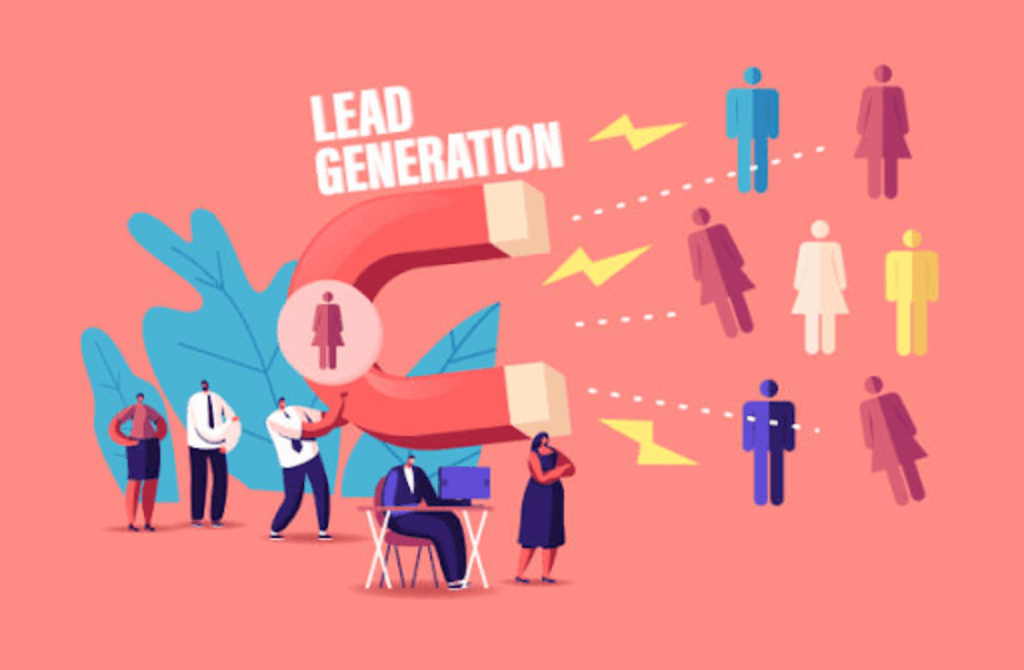
In the realm of B2B marketing, effective lead generation is the lifeblood of business success. The digital landscape offers a myriad of opportunities to connect with potential clients, but mastering the art of lead generation requires strategic planning and innovative approaches. In this blog, we’ll explore key tactics and strategies to elevate your B2B lead generation efforts in the digital age.
Understanding the B2B Buyer’s Journey: Mapping Your Approach
Before diving into specific lead generation tactics, it’s essential to understand the B2B buyer’s journey. Unlike B2C transactions, B2B purchases often involve a more complex decision-making process, with multiple stakeholders and a longer sales cycle.
Awareness Stage:
At the beginning of the journey, businesses are identifying challenges and seeking solutions. Content that addresses industry pain points and provides valuable insights can attract attention.
Consideration Stage:
As businesses evaluate potential solutions, in-depth content such as whitepapers, case studies, and webinars becomes crucial. Position your brand as an industry authority to gain consideration.
Decision Stage:
In the final stage, businesses are ready to make a purchase decision. Offer detailed product information, demos, and personalized interactions to guide them toward choosing your solution.
Optimizing Your Website: A Hub for Lead Generation
Your website is often the first point of contact for potential B2B clients. Optimize it to serve as a lead generation hub:
Clear CTAs (Call to Actions):
Strategically place clear and compelling CTAs throughout your website. These should guide visitors toward taking the next step, whether it’s downloading a whitepaper, signing up for a webinar, or requesting a demo.
Lead Magnets:
Create valuable lead magnets, such as e-books, guides, or industry reports, and offer them in exchange for visitors’ contact information. This exchange provides you with qualified leads interested in your industry insights.
Landing Pages:
Develop dedicated landing pages for specific campaigns or offerings. Ensure these pages are optimized for conversions with concise messaging, relevant visuals, and straightforward forms.
Content Marketing Excellence: Educate and Engage
Content marketing remains a cornerstone of B2B lead generation. Craft compelling and educational content tailored to each stage of the buyer’s journey:
Blog Posts:
Regularly publish blog posts that address industry challenges, trends, and solutions. Optimize them for SEO to attract organic traffic.
Educational Resources:
Develop in-depth content such as whitepapers, e-books, and guides that provide valuable insights. Gate this content behind forms to capture lead information.
Webinars and Podcasts:
Host webinars or podcasts featuring industry experts. These formats offer a more interactive and engaging way to share knowledge.
Video Content:
Utilize video content to showcase product demos, client testimonials, and thought leadership. Video is a powerful medium for conveying complex information in an easily digestible format.

Social Media Engagement: Targeted Outreach
Social media platforms are valuable tools for B2B lead generation when used strategically:
LinkedIn for B2B:
LinkedIn is a goldmine for B2B lead generation. Optimize your company profile, share industry insights, and participate in relevant groups. Leverage LinkedIn Ads for targeted outreach to specific industries or job roles.
Twitter Engagement:
Join conversations in your industry on Twitter, share relevant content, and participate in Twitter chats. Use Twitter Ads to promote your content to a broader audience.
Facebook and Instagram:
While often associated with B2C, Facebook and Instagram can also be effective for B2B lead generation. Utilize targeted ads to reach specific demographics and industries.
Email Marketing: Nurturing Leads Effectively
Email marketing is a powerful tool for lead nurturing. Implement strategies that guide leads through the buyer’s journey:
Segmentation:
Segment your email lists based on factors such as industry, engagement level, or stage in the buyer’s journey. This allows for more personalized and targeted communication.
Drip Campaigns:
Develop drip campaigns that deliver a series of emails over time. Gradually nurture leads with valuable content, case studies, and product information.
Personalization:
Personalize your email content based on the recipient’s behavior and preferences. This can include personalized recommendations, content suggestions, or exclusive offers.
Interactive Content: Engage and Capture Leads
Interactive content goes beyond traditional formats, providing a more engaging experience for potential leads:
Quizzes and Assessments:
Create quizzes or assessments that allow leads to evaluate their needs or challenges. Collect contact information in exchange for personalized results or recommendations.
Calculators:
Develop online calculators that help leads estimate cost savings, ROI, or other relevant metrics. This type of interactive content encourages engagement and provides value.
Surveys and Polls:
Conduct surveys or polls to gather insights from your audience. This engagement not only provides valuable data but also opens a channel for further communication.
Search Engine Optimization (SEO): Boosting Visibility
A strong SEO strategy is crucial for B2B lead generation. Optimize your online presence to ensure your brand appears in relevant search results:
Keyword Optimization:
Conduct thorough keyword research to identify the terms your target audience is searching for. Optimize your website, content, and meta tags accordingly.
Quality Content:
Search engines prioritize high-quality, relevant content. Regularly publish content that addresses industry queries and provides valuable insights.
Backlink Building:
Earn backlinks from reputable sources within your industry. Backlinks contribute to your website’s authority and improve search engine rankings.
Strategic Partnerships and Collaborations: Expanding Reach
Forge partnerships with complementary businesses or industry influencers to extend your reach:
Co-Hosted Webinars:
Collaborate on webinars or events with businesses that share your target audience. This provides exposure to a broader set of potential leads.
Guest Blogging:
Write guest posts for industry publications or collaborate with influencers on joint content projects. This not only enhances your brand visibility but also positions your brand as an authority.
Referral Programs:
Establish referral programs with partners or clients. Encourage them to refer leads to your business in exchange for incentives.
Case Studies: Success Stories in B2B Lead Generation
HubSpot: Inbound Marketing Excellence
HubSpot, a leader in inbound marketing, has effectively utilized content marketing and inbound strategies for B2B lead generation. By offering valuable resources such as e-books, guides, and educational content, HubSpot attracts businesses looking to improve their marketing and sales processes. Their approach positions them as thought leaders and generates qualified leads interested in their platform’s solutions.
Adobe: Interactive Content Engagement
Adobe, a global software company, incorporates interactive content in its lead generation strategy. Adobe’s “Creative Types” quiz, for example, allows users to discover their creative personalities. This interactive content not only engages the audience but also captures valuable lead information. The insights gathered from the quiz help Adobe tailor its marketing messages and offerings to specific segments, improving overall lead quality.
Challenges and Considerations in B2B Lead Generation
Lead Quality vs. Quantity:
While it’s important to generate leads, the focus should be on quality over quantity. Ensure that your lead generation strategies align with attracting and nurturing leads who are genuinely interested in your offerings.
Lead Attribution:
Attribution can be challenging in the B2B context, where multiple touchpoints contribute to a lead’s decision-making process. Implement attribution models and analytics tools to understand the impact of each touchpoint on lead generation.
Adapting to Industry Changes:
B2B industries are dynamic, with evolving trends and technologies. Stay informed about industry changes and continuously adapt your lead generation strategies to align with new developments.
Data Privacy and Compliance:
With increased emphasis on data privacy, ensure that your lead generation practices comply with relevant regulations. Obtain explicit consent for collecting and using lead information and implement robust data protection measures.
Mastering B2B lead generation in the digital age requires a multifaceted approach that aligns with the complexities of the B2B buyer’s journey. By understanding your audience, optimizing your digital presence, and employing innovative strategies such as interactive content and strategic partnerships, you can elevate your lead generation efforts.
Drawing inspiration from success stories like HubSpot and Adobe, where content excellence and interactive engagement drive B2B lead generation, provides valuable insights for shaping your own strategies. As the digital landscape continues to evolve, staying agile and embracing emerging trends will position your B2B business for sustained success in lead generation and business growth.



